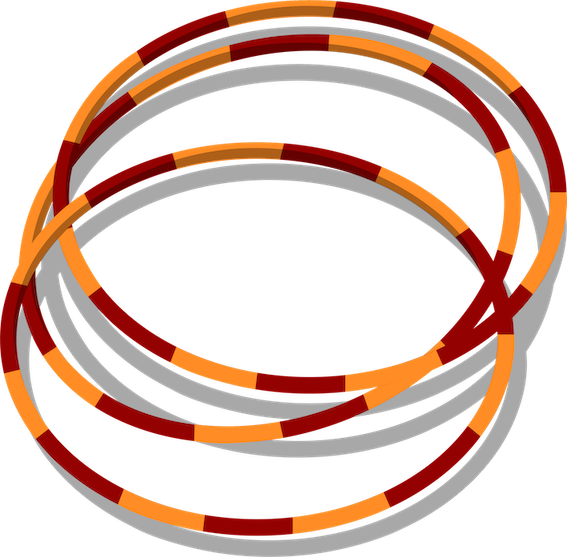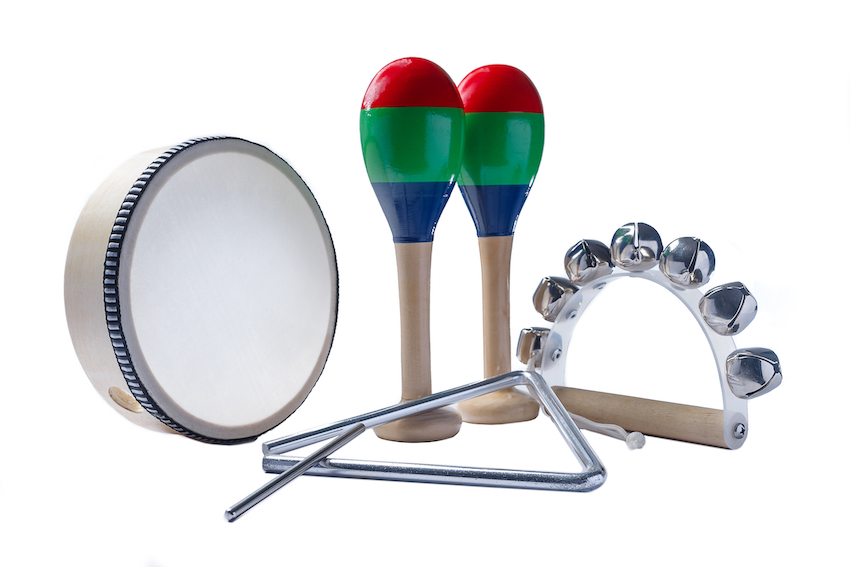Y3. Lesson 12. Triple time (3-metre)
Prior learning: 2-metre, 4-metre
Duration: 30 minutes
Materials: Recorders
Keywords: Beat, rhythm, singing, chanting, partners, rhymes, circle games.
Difficulty: ![]()
Prepare
Present
Triple time
Practise

Triple time, or 3-metre (3/4 time), is often referred to as "waltz time," this signature has three beats per measure, with the crotchet or quarter note receiving one beat. Each measure is counted as "1, 2, 3."
 Melodic development
Melodic development
![]() Students discover this well-known song is in triple time.
Students discover this well-known song is in triple time.
- Lead the class in singing the song. If it is unfamiliar to students, then teach it line-by-line until secure.
- Teach that the song is in triple time, or 3-metre, meaning three crotchets or quarter notes are in each measure.
- There are also six quavers, or eighth notes, in each measure.
 Rhythmic development
Rhythmic development
![]() Students discover note values that are found in triple time.
Students discover note values that are found in triple time.
- Project the worksheet on the board.
- Teach that in triple time, there may be three crotchets or quarter notes in each measure. Explain the count would be 1+1+1.
- There may also be a minim or half note plus a crotchet, the count being 2+1.
- There may be a dotted minim, for a count of 3.
- There may be three quavers or eighth notes, each pair of quavers lasting for one beat, so a count of 1+1+1.
- Ask students to copy the worksheet into their notebooks.
- Note: There are other combinations that have not been discussed and will appear in forthcoming lessons.
 Creative movement
Creative movement
![]() Students play a version of musical chairs using hula hoops.
Students play a version of musical chairs using hula hoops.

- The musical hula hoop game bears a strong resemblance to the classic game of musical chairs, with a notable twist: each hula hoop can accommodate multiple students.
- Choose an up-tempo song.
- Begin by arranging the hula hoops in a wide circle on a flat surface.
- As the music plays, the students circle the hoops from the outside. Once the music halts, everyone must step into a hoop.
- No pushing or shoving is allowed!
- There is no need actually to use the hoop for hula hooping; it merely serves as a boundary for the players.
- Ensure their entire body is within the hoop, avoiding any outstretched arms or legs.
- Additional fun can be had. For example, when the music stops, everyone must put only one foot in the hoop. Anyone who puts both feet in the hoop is then out.
 Listening
Listening
![]() Students
Students
- With students seated and attentive, explain that the class will hear some short pieces of music.
- Each piece of music has one strong beat and two weak beats. This means the music is in triple time (or 3-metre).
- Play the first track and ask students to listen for the strong and weak beats and to clap in time while counting 1, 2, 3.
- When secure, repeat with the other two tracks.
 Visual learning
Visual learning
![]() Students discover where the bar lines should be placed.
Students discover where the bar lines should be placed.
- Project or print out the worksheet.
- Tell students that they are musical detectives and, because someone forgot to fill them in, must discover where the missing bar lines are.
- There will be two for each example.
- Students should add the beats on each staff to make a count of three, as the exercise is in triple time.
- Remind students of the values of a minim, crochet and quaver and how they can add up to three.
- Ask a volunteer to come forward and show the class where the first bar line should be drawn.
- Another volunteer should show where the second bar line should be drawn.
- The process continues until the last example is finished, and the exercise begins again with other students.
 Instruments
Instruments
![]() Students practice a new song including the note C.
Students practice a new song including the note C.
- Remind students of the new note C using your left hand's thumb and second finger.
- Ask the class to play the new note and then name it.
- Students should hold their instruments correctly and use gentle blowing to avoid squawking.
- Students should then play the song C Me!, which consists of all four notes learned thus far, i.e. B, A, G, C.
- Lead the class in playing the first four measures slowly and accurately.
- Look for good technique in tonguing and how the instrument is held, offering gentle guidance where necessary.
- When secure, teach the last four measures.
- Remind students to count 1,2,3,4 in their heads as they play.
 Part work
Part work
![]() Students use untuned percussion to keep the beat and rhythm to a known song.
Students use untuned percussion to keep the beat and rhythm to a known song.

- Choose a known classroom song, such as Apple Tree, and divide the class into two groups.
- Distribute untuned percussion instruments, such as shakers, hand drums, triangles, etc.
- Explain that one group will play the beat, and the other will play the song's rhythm.
- Both groups will play at your command as you lead the class in singing the song.
 Assess
Assess
Suggested lessons
Y1. Beat II

Y1. Beat III

Y1. Beat IV

